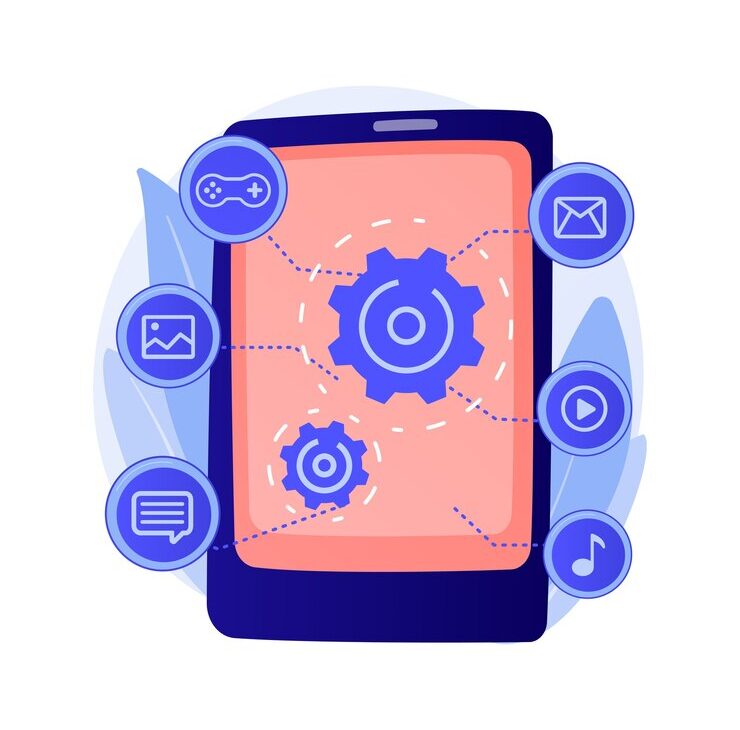In today’s digital age, the number of people accessing websites on their mobile devices has exceeded that of desktop users. This shift has dramatically transformed the way businesses operate, especially in the thriving field of ecommerce. As more consumers turn to their smartphones and tablets for shopping, companies are investing in optimizing their ecommerce websites for mobile use.
Moreover, mobile optimization no longer falls into the novelty category; it’s become necessary if businesses aspire to thrive in the hyper-competitive ecommerce landscape. This blog post will walk you through 12 tips for effective ecommerce mobile optimization. Let’s begin!
Why Should You Learn Mobile User Behavior?
Before getting into the tips, let’s first understand mobile user behavior. Mobile users have unique shopping habits and expectations. They value speed, efficiency, and convenience in their shopping experience. With smaller screens and less stable internet connections, they require straightforward navigation and quick page load times.
They often make spontaneous purchases and are more likely to abandon a site if it doesn’t meet their expectations for a seamless browsing experience. Consequently, it’s essential to understand these behaviors and adapt your site accordingly to improve your conversion rates for your ecommerce business. You thus have to implement best practices to optimize your ecommerce store on mobile.
What Are The 12 Essential Tips for Ecommerce Mobile Optimization?
Optimizing for mobile ecommerce involves incorporating various best practices that focus on enhancing the user experience. Let’s delve deeper into these areas to understand how they can positively impact your mobile conversion rates.
1. Prioritize Site Speed and Performance
In mobile ecommerce, a slow-loading website can be catastrophic for conversions. Therefore, prioritizing site speed and performance is fundamental to the success of your mobile ecommerce site.
Here are some tips to improve your site’s loading speed:
- Optimize Images: Large images can significantly slow down your site. Use appropriate formats (like JPEG or WebP), compress your photos, edit the images wherever needed, and ensure they’re appropriately sized for mobile phone screens.
- Minimize Server Requests: Every element on your site, from scripts to images, makes a server request. The fewer requests your server has to fulfill, the faster your site will load. Consolidate CSS and JavaScript files, and only load essential elements.
- Use Apps and Tools: Several apps and tools can help optimize images, conduct site speed tests, and offer insight into improvement areas.
2. Streamline Navigation
With limited screen space, mobile shopping requires easy and intuitive navigation. A confusing or complex navigation structure can frustrate smartphone users and lead to higher bounce rates.
Here are some strategies to streamline navigation on your mobile site:
- Clear Menu Items: Keep menu items short. Given that there’s less space on mobile devices, complicated or lengthy menu items can result in a cluttered look, where customers may find it challenging to find what they need.
- Intuitive Icons: Icons can convey meanings faster than words. Use universally recognized icons for menus, carts, searches, and more. Refer to the table below to learn more about icon signs.
|
Icon Sign |
Description |
|
Hamburger |
Open the main menu |
|
Magnifying Glass |
Initiate a search |
|
Shopping Cart |
Access the shopping cart |
|
User |
Login/Register/View user profile |
- Adequate Spacing: To prevent users from accidentally clicking on the wrong element, ensure there is an adequate space between clickable items.
3. Simplify the Checkout Process
Most conversion leaks happen during the checkout process. With mobile devices, ensuring the checkout is as seamless as possible becomes even more crucial. A complicated or cumbersome checkout process could lead to cart abandonment.
Here are some ways to simplify the checkout process for your mobile users:
- Guest Checkout Option: While having your customers create accounts can benefit data collection and tracking, many mobile users prefer a swift guest checkout. By offering this option, you reduce the steps towards checkout, saving your customers time.
- Fewer Fields in Forms: The more information you ask from a customer, the greater the chance they’ll abandon the cart. Limit the number of fields in your forms and ask only for necessary information. This streamlines the checkout process and reduces the risk of input errors, especially on small touch keyboards.
- Quick Checkout Solutions: Integrating quick checkout solutions such as Google Pay or Apple Pay can simplify the process further, providing a fast and secure payment method with only a few taps.
4. Responsive Design
A responsive web design is no longer optional in today’s mobile-centric marketing environment; it’s a necessity. It ensures your website adapts to different screen sizes, devices, and orientations.
Here are some advantages of implementing a responsive design for your ecommerce site:
- Improved User Experience: A responsively designed site makes all webpage elements easily viewable and accessible, irrespective of the screen size. Clear visuals, readable text, and easy navigation contribute to user satisfaction, increase visitor time on site and enhance the probability of conversion.
- Better SEO: Search engines like Google prioritize mobile-friendly, responsive sites in their search results due to their superior user experience. Having a responsive design can boost your rankings, giving you an edge over competitors.
- Increased Reach: With the proliferation of various mobile devices in the market, a responsive design ensures that your site appeals to a broader audience, expanding your reach and potential customer base.
5. Enhance Product Discovery
In mobile ecommerce, effective product discovery plays a critical role in creating a satisfactory shopping experience.
Here are some ways to enhance product discovery on your mobile site:
- Clear Categories and Subcategories: Organizing your products into distinct categories and subcategories can make browsing easier for mobile users. Instead of making your customers scroll through endless product lists, offer categories and subcategories that will direct them to specific items they want.
- Top and Trending Products: Highlighting popular products can guide users towards items others buy. This not only simplifies the product discovery process but also instills a sense of assurance in customers that they’re making a popular choice.
- Personalized Recommendations: Personalized product recommendations based on the user’s past activities (browsing history, previous purchases, etc.) can enhance product discovery. By showing products relevant to their interests and needs, you can make the browsing experience more engaging and personalized, which could lead to higher conversions.
6. Implement Predictive Search and Voice Search
Predictive search and voice search have emerged as powerful tools in the ecommerce landscape, particularly for mobile shopping.
Here’s why:
- More Innovative Search: Predictive search utilizes AI to offer real-time suggestions as users input their queries. This refines their search, helping them find the desired items quickly.
- Improved Accessibility: Voice search caters to users who prefer voice-activated searches and those with physical disabilities, making typing difficult. Additionally, with the rise of voice-activated assistants like Siri and Alexa, more consumers are using voice commands for online shopping. Consider integrating voice search into your mobile site or app to leverage this trend.
- Better UX: Predictive and voice searches contribute to a better user experience by offering improved site speed and a smoother path to purchase.
Considerations for integrating predictive and voice search into your mobile ecommerce strategy include:
- Use of Long-Tail Keywords: Voice search queries are typically longer and more conversational than text-based searches. Optimize your site content with long-tail, conversational keywords that align with potential voice searches.
- Natural Language Processing (NLP): Leverage NLP technologies to accurately understand and respond to voice commands. This ensures a seamless and practical voice search experience for the users.
- Comprehensive Product Information: To optimize for predictive search, ensure all your products are meticulously tagged, categorized, and described to enable accurate and relevant search suggestions.
7. Include Mobile-Exclusive Promotions and Offers
Create a sense of exclusivity for mobile shoppers by offering promotions and deals tailored specifically for them.
Let’s learn how to include these promotions and offers:
- Push Notifications: Use push notifications to alert users about exclusive offers, encouraging them to explore your online store on mobile.
- Mobile-Exclusive Promotions: Incorporate promotions for mobile users to enhance their experience and incentivize repeat visits.
- Boost Sales and Loyalty: By leveraging these strategies, you can ultimately increase mobile sales and foster customer loyalty.
8. Utilize AI and Machine Learning for Personalized Recommendations
Leverage AI and machine learning to enhance user experience by providing personalized product recommendations based on past interactions.
Here’s how utilizing AI and Machine Learning can help:
- Personalized Suggestions: Tailoring product recommendations to individual preferences enhances user engagement and increases conversion likelihood.
- Advanced Algorithms: Utilize algorithms to analyze user behavior patterns, purchase history, and preferences for a more tailored mobile shopping experience.
- Curated Experience: This approach provides a seamless and curated shopping experience, making it easier for customers to find what they want.
9. Offer Easy Mobile Payment Solutions
Another important tip for ecommerce mobile optimization includes providing seamless and secure mobile payment options. Doing so enhances the user experience on your ecommerce site.
Let’s check out the different ways you can offer easy mobile payment solutions:
- Integrate Popular Gateways: Simplify checkout by incorporating trusted payment gateways like Google Pay and Apple Pay.
- Enhance Trust and Satisfaction: Offering convenient payment methods boosts customer trust and satisfaction.
- Optimize for Mobile: Ensure mobile payment solutions are optimized for small screens and facilitate quick transaction processing.
10. Encourage Customer Reviews and Testimonials
Showcasing customer reviews and testimonials is pivotal for boosting credibility and fostering trust among potential buyers.
Here’s why:
- Authentic Feedback: Integrate genuine online reviews and customer stories to provide valuable insights that positively influence mobile shoppers’ purchase decisions.
- Leverage Social Proof: Social proof significantly enhances user experience, boosting ecommerce sales by building trust.
- Encourage Community Engagement: Invite customers to share their experiences, fostering a sense of community and reliability on your mobile site.
11. Use High-Quality Product Images and Zoom
Captivating mobile shoppers requires impeccable visuals. You may connect with a platform like FlixStudio to get high-quality images to add to your ecommerce site.
Additionally, refer to the below pointers to know what you’ll need for your online store:
- High-Quality Images: Use high-resolution product images to enhance user experience and showcase details effectively.
- Image Zoom Functionality: Implement image zoom features to allow customers to examine products closely, increasing visual appeal on limited mobile screens.
- Build Trust: Optimizing images for mobile attracts customers and instills confidence in the quality of your offerings, leading to greater engagement.
12. Implement Live Chat Support
Implementing live chat support on your e-commerce mobile site is a game-changer that enhances the customer experience.
Here’s why you should implement it:
- Instant Connection: Live chat support enables mobile shoppers to connect with customer service in real-time, addressing queries and guiding them through shopping.
- Seamless Interaction: This feature facilitates prompt resolution of concerns, increasing the likelihood of completing a purchase.
- Enhanced Customer Satisfaction: By integrating live chat, you demonstrate commitment to customer satisfaction, leading to improved conversions and higher engagement on your mobile commerce platform.
How to Overcome Challenges in Mobile Ecommerce Optimization?
Now that we have discussed the 12 essential tips for mobile ecommerce optimization, let’s look into solutions to potential challenges. Limited screen size, distractions, and personalization pose hurdles in mobile ecommerce optimization. Let’s discuss how to overcome these challenges.
1. Limited Screen Size
Optimize your ecommerce mobile site for small screens by using responsive design, displaying critical information clearly, and simplifying checkout. Prioritize user experience to make shopping easy and efficient. This approach enhances the mobile experience and drives sales.
2. Distractions and Interruptions
Mobile ecommerce faces challenges from user distractions and interruptions. Minimize these by ensuring simple navigation, quick product access, and clear CTAs. Avoid pop-ups and ads that disrupt shopping, creating a seamless experience that boosts engagement and conversions.
3. Emphasizing Personalization
Emphasize personalization in your mobile ecommerce strategy to create tailored experiences for shoppers. Use AI and machine learning to offer product recommendations based on user behavior, remember preferences, and provide customized content. This focus on personalization enhances the user experience, boosts engagement, and drives conversions.
Conclusion
Mobile optimization is essential in today’s digital marketing landscape as smartphone usage rises. Optimizing mobile ecommerce through simplified navigation, streamlined checkout, and improved product discovery enhances user experience and meets evolving customer expectations. Leveraging AI and machine learning for personalized recommendations, predictive, and voice searches further boost engagement.
That wraps up our blog with essential tips on mobile ecommerce optimization. Implement these practices in your strategy to enhance user experience, reduce bounce rates, and increase conversions on your mobile site. Remember, a well-optimized mobile ecommerce platform will significantly impact your bottom line.
Frequently Asked Questions
How do you optimize mobile commerce?
Mobile commerce can be optimized by implementing a responsive design that adapts to various screen sizes, streamlining the navigation and checkout processes, integrating advanced technologies such as voice search and AI, personalizing product recommendations, and optimizing page load times for improved performance.
Why is mobile optimization important in e-commerce?
Mobile optimization is essential in e-commerce because an increasing number of consumers use their smartphones and tablets for online shopping. A mobile-optimized site provides a better user experience, potentially increasing conversions and sales. Mobile optimization also contributes positively to the site’s SEO performance.
What is an example of mobile optimization?
An example of mobile optimization is implementing a responsive web design, which adjusts the design, layout, and usability according to the device used. This ensures a consistent and user-friendly experience across different devices, reducing bounce rates and increasing conversion opportunities.
How can I improve the performance and user experience of my mobile site?
You can improve your mobile site’s performance and user experience by optimizing images and videos for quicker load times, simplifying navigation, offering easy and secure mobile payment solutions, incorporating intuitive search features, providing immediate customer support, and utilizing the power of AI for product recommendations.



